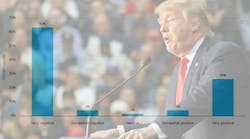Editor’s Comments: Following Virtual Footsteps
By Elizabeth Cutright
Let’s get the scary statistics out of the way first. Approximately 130 billion—yes, billion—gallons of water are consumed each year by the world’s five largest food and beverage companies: Nestle, Unilever, Coca-Cola, Anheuser-Busch, and Danone. To put that number in perspective, the same amount of water could supply every person on the planet with his or her daily needs. If that’s not enough, according to Goldman Sachs, global water consumption is doubling every 20 years. And in a recent annual report, the Pacific Institute’s president, Peter Gleick, warns, “The world is in danger of running out of sustainably managed water.”
Although I am loath to employ Monday Morning Quarterbacking, I think it’s worth discussing how we have gotten into this mess. Inefficient agricultural irrigation, crumbling infrastructure, industrial contamination and waste, biofuel subsidies–they’ve all played a part. But I think that Gleick’s main point lays out the path to our current situation quite neatly: Changes in the way water has been used (and abused) throughout the planet have degraded quality and triggered greater costs in keeping what should be a renewable resource clean and pure enough for human consumption. By failing to be proper stewards, we’ve created a situation where water-vital to us all-is no longer a guaranteed commodity. Scarce, polluted, and costly…water is-for all intents and purposes-the new oil.
What we need is a change in perspective to spur new action and a stronger commitment to efficient water resource management.
Of course one of the best conduits for change is public outreach. In Australia, for example, the non-profit group Do Something is promoting a labeling system that tracks the “water footprint” of items sold in supermarkets. The idea of a water footprint, first introduced by A.Y. Hoekstra and P.Q. Hung from UNESCO-IHE in 2002, is that both direct and indirect water use by a particular entity-consumer, community, or commercial/industrial enterprise-can be measured by adding up the total amount of freshwater used to produce the goods and services consumed by that entity. There are three components of a water footprinting: blue (surface and ground water), green (rainwater and soil moisture), and grey (water that has already been used). Most importantly, the water footprint takes into account the direct and indirect use of water
“Water footprint” is closely related to but different from the concept of “virtual water.” Defined as “imbedded water costs,” the idea behind virtual water is that any product–be it food or commercial goods”–requires a certain amount of water to be produced. Once a water scarce region identifies goods that come with a high virtual water cost, they can develop regional partnerships with their neighbors, who can produce the same item without the same strain on their own water resources.
The concept of virtual water has found its niche in the area of global trade. According to recent studies, 800 billion gallons of virtual water are traded each year. For countries with scarce water resources, virtual water allows a switch from an ag-heavy water use system to water-based sanitation services and drinking water. For countries that are not in dire straights yet—ike the US—virtual water provides data that can be used for future planning.
So how do we get out of this mess? We can begin curtailing-and eventually suspending altogether-those practices that got us into this in the first place by returning to efficient and intelligent irrigation practices; rehabilitating and updating our aging water collection, storage, and delivery systems; emphasizing treatment and reuse at an industrial and commercial level; and greater consideration towards the potential water requirements of biofuels. In addition, by redefining how we measure the value of water—by monitoring our “water footprint” for example, or keeping track of our virtual water costs—we can harness new tools to help us protect, and efficiently manage, our resources.
Elizabeth Cutright is a former editor of Water Efficiency.

